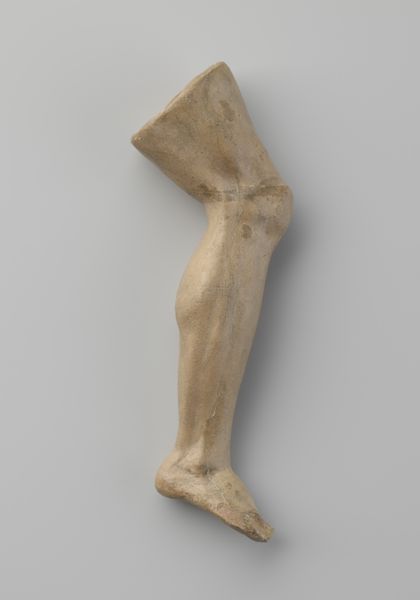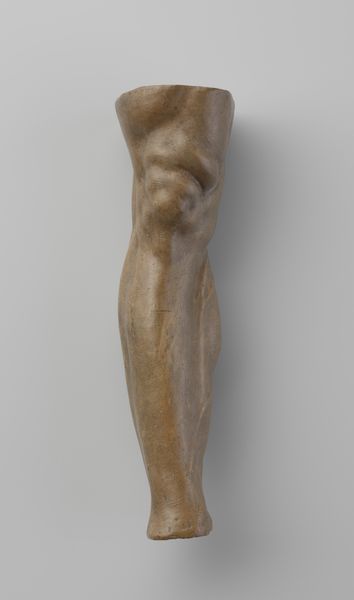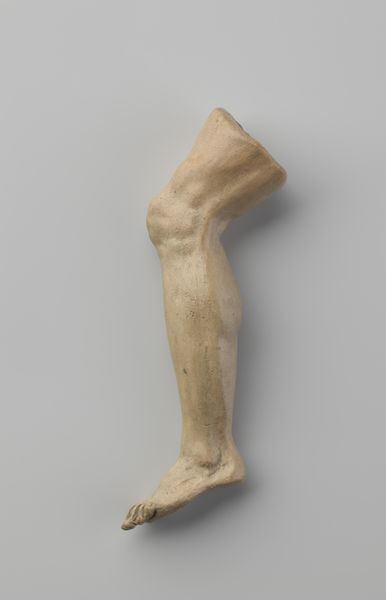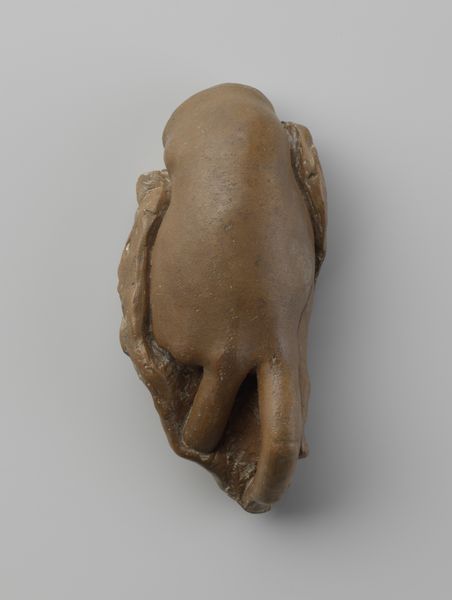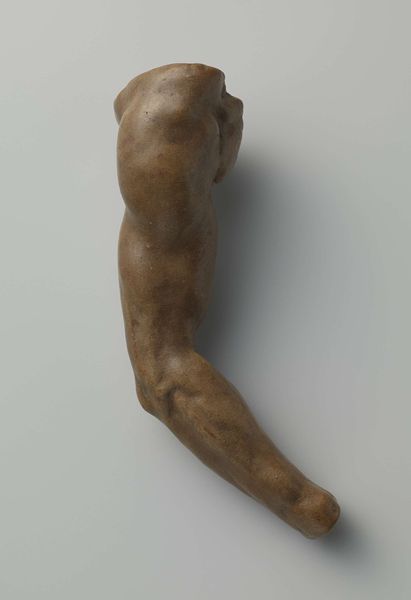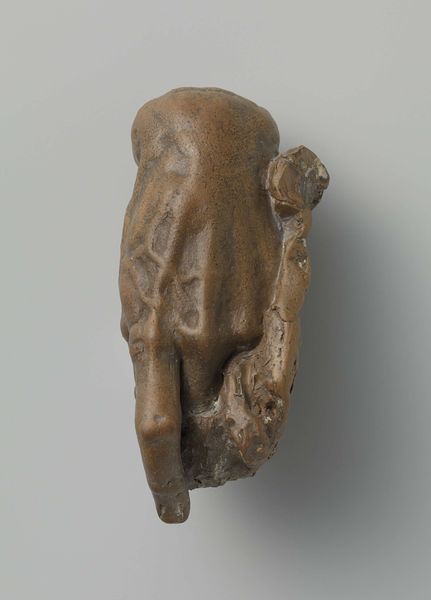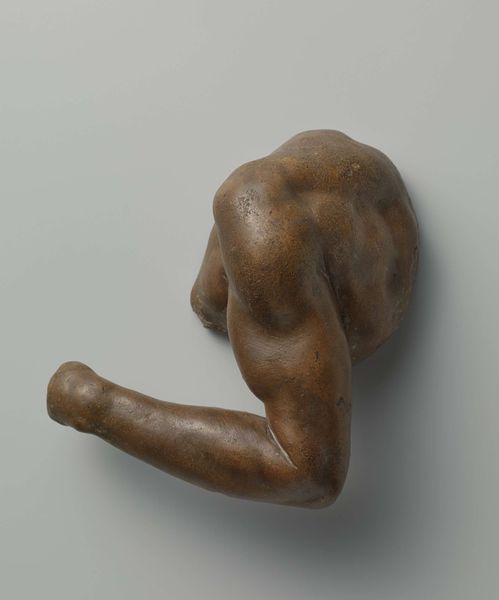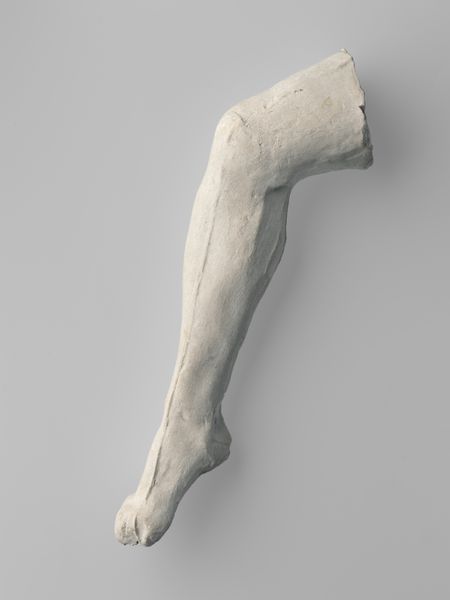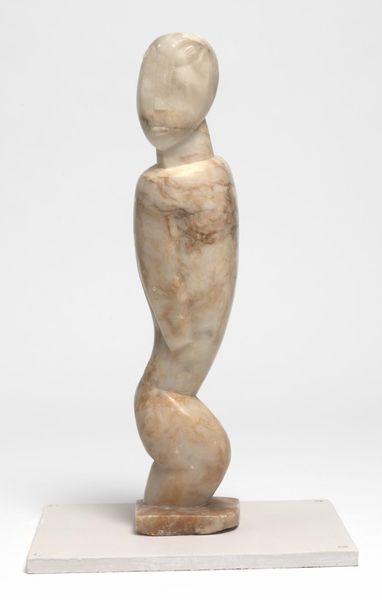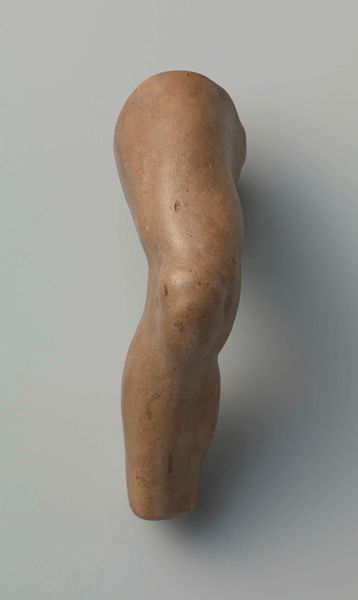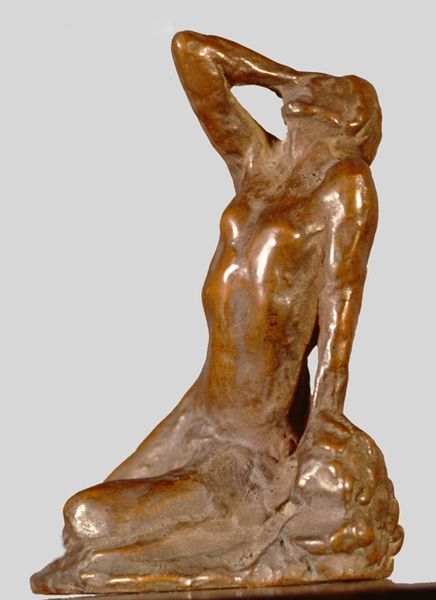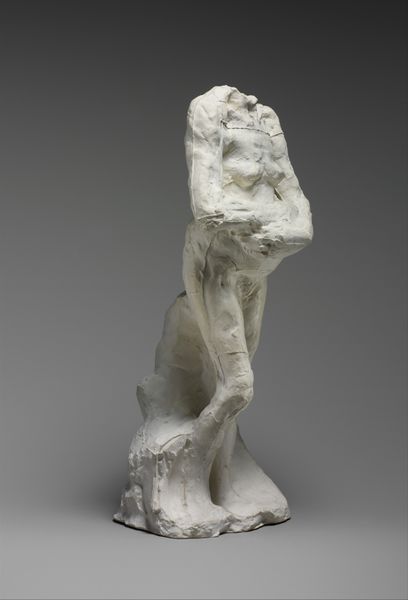
bronze, sculpture
#
bronze
#
mannerism
#
figuration
#
sculpture
#
academic-art
Copyright: Rijks Museum: Open Domain
Editor: So, here we have “Study Models of Parts of the Body,” made sometime between 1560 and 1570 by Johan Gregor van der Schardt. It's a bronze sculpture, quite small, and…well, it's just a leg and part of a torso. It feels oddly disconnected, like a fragment of a larger story. What do you see in this piece that I might be missing? Curator: Ah, fragments! I find that so often the part reveals just as much as the whole, perhaps even more! This bronze limb, seemingly adrift in time, whispers of Mannerism. Don’t you think there's a kind of exaggerated musculature here, almost as if nature itself is striving for an ideal? It’s less about capturing reality and more about showcasing the artist’s skill, twisting and manipulating the form into something...better, more elegant. Where do you think such an idea originated from? Editor: So, this deliberate exaggeration—it’s about showing off skill more than representing real human anatomy? I hadn't really considered it in that light; I suppose it's far removed from just wanting to represent reality as closely as possible, like maybe some of the classical sculpture. Curator: Precisely! The Mannerists were thumbing their noses at the classical obsession with proportion. It's like they’re saying, "Sure, the Greeks were good, but watch what *I* can do!" Think of it as sculpture with a touch of bravado. And don’t you find a peculiar beauty in the incomplete? The absence can be as compelling as the presence; the implied form might even fire the imagination. Editor: Yes, that's a very different and inspiring point! It's odd but rather remarkable how it is fascinating, rather than alienating. I'll be honest, I think I’ll keep a different eye out for such intentions from now on. Curator: Exactly! Perhaps that is where it leaves its trace; art shapes your eyes for the future.
Comments
rijksmuseum about 2 years ago
⋮
This group of small models of parts of the body are carefully copied after famous sculptures, in particular by Michelangelo, in Florence and Rome. They came from the workshop of the Nijmegen sculptor Johan Gregor van der Schardt, who had a successful career in Italy, Nuremberg, and Copenhagen. They are extremely rare examples of the, in part autograph, study material of a 16th-century sculptor.
Join the conversation
Join millions of artists and users on Artera today and experience the ultimate creative platform.
